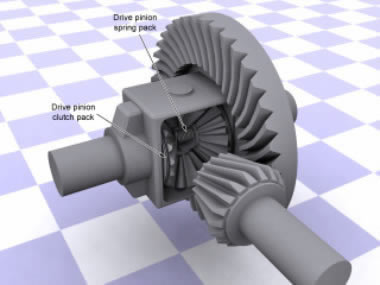Limited Slip Differential

Unlike Traction Control, where it reduces power to all wheels equally, Limited Slip Differential (LSD) keeps tires from spinning by transferring a torque to the tires that have grip. Usually during cornering, but also during acceleration. Because TC works by cutting fuel during wheel spin (that's mean reducing power output of the engine), always is recommended to use Limited Slip Differential first to try to stop wheel spin by transferring power to other wheel with good grip. If that phase is not successful and spin can't be stopped in this way, traction control taking over.
Accel (during acceleration) is straight forward. Reduces tire spin during acceleration, reducing understeer in F1 cars, or reducing oversteer in front engined cars
Decel, reduces tire spin during braking. During deceleration, Limited Slip Differential is used as part of engine braking system, or, after 2008, by it's own. After FIA introduced common ECU for 2008 championship, engine braking system was banned.
Of course, like most things on a Formula One car, this is all electronically controlled, and can be programmed into the car - in fact, until it was banned, there was a button on the steering wheel which drivers could press to manually lock or release the differential as they pleased, enabling them to get better traction out of the corners and to go closer of traction circle edges. Electro-hydraulic devices are used in F1 to constantly change the torque acting on both of the drive wheels at different stages in a corner. This torque relationship can be varied to 'steer' the car through corners, or prevent the inside rear wheel from spinning under harsh acceleration out of a bend. The FIA allows the use of these devices provided that their characteristics are fixed once the car is out on the track and settings can't be changed by driver.







